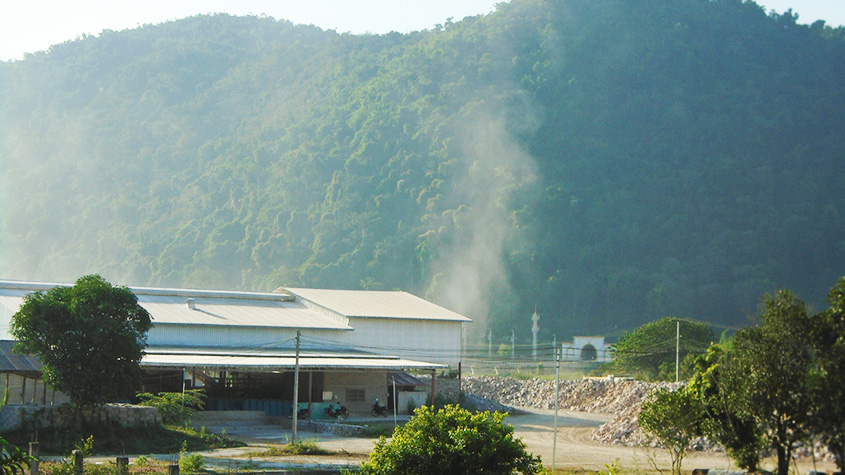
Lao-China Railway Construction by Hobo Maps - - - HOME
See our Lao-China Railway Maps and Lao-China Railway Schedules
The Lao-China Railway project was promoted, designed and largely financed by the People's Republic of China as part of its Belt and Road Initiative. The railway is managed by The Laos-China Railway Company Ltd. (LCR).
The Lao-China Railway's 422 km line in Laos cost $6 billion or about $14 million per km. In Sept. 2023 a new 142 km long Chinese-built high speed railway line was opened in Indonesia from Jakarta to Bandung. The project cost was $7.3 billion which comes to about $51 million per km or 3.6 times more costly per km than the line in Laos. Seems that Laos has received good value even though the Indonesian line is double track and faster.
Main contractors for construction were Power Construction Corporation of China (PowerChina), China Railway Construction Corporation Limited (CRCC) and China Railway Construction Engineering Group (CRCEG).

The Project is to have 33 railway stations in total of which 20 or 21 will be operational in the first phase with 12 to be placed into service later. The Project has 5 major stations - at Boten, Muang Xai (Oudom Xay), Luang Prabang, Vang Vieng and Vientiane. Tthere are 10 stations where passengers can board and disembark - in Vientiane, Phonhong, Vang Vieng, Kasi, Luang Prabang, Muang Nga, Muang Xay (Oudom Xay), Namor, Natuey and Boten.
Railway distance chart below:
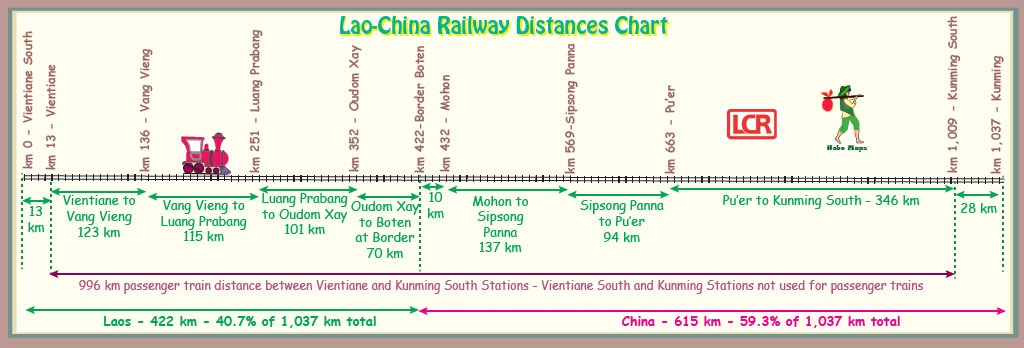
The railway route inside China consists of a new construction section from the Lao border to Mohan plus utilization of the existing Mohan-Yuxi Rail Line and the existing Yuxi-Kunming Line.
LaoChina Railway track system image below with overhead electric cables:

Communication Towers connect and consolidate the traffic command and control system of the electrified railway and are the brain and nerve center of the entire operation. Images of two communication towers below - north of Vang Vieng and beside the tunnel entrance near Vang Vieng:

Railway Traffic Control Center images below:

Electrification Info - Passenger Railway System is entirely powered by rainfall.
The Nam Ou river hydropower project cascade of 7 dams and power plants is a main provider of electricity for the Lao-China Railway system.
Lao-China Railway passenger trains are classified as Electrical Multiple Unit (EMU) trains with each rail car being self-propelled instead of being pulled or pushed by a traditional engine car.
The 9-car Lane Xang fast train has a cab car located at each end of the train to allow the train to reverse direction of travel with a cab car always in front position. The train is under control of a single driver in a dedicated cab car.
The high voltage electric power for the EMU train is derived from a single contact device extended and pushed upward to the overhead power cable from a dedicated cab car. Power is then transmitted to each of the other cars.
Electric system has a separate electric power line running beside and along the tracks the entire length of the line. Electric system also has transformers and control systems with switches, communication towers and equipment.
Railway electrification was conducted by China Southern Power Grid (CSG) together with Electricite du Laos Transmission Company Limited (EDLT).
Lao-China Railway tower and overhead power contact system image below from lines near Vang Vieng Nov. 2021:
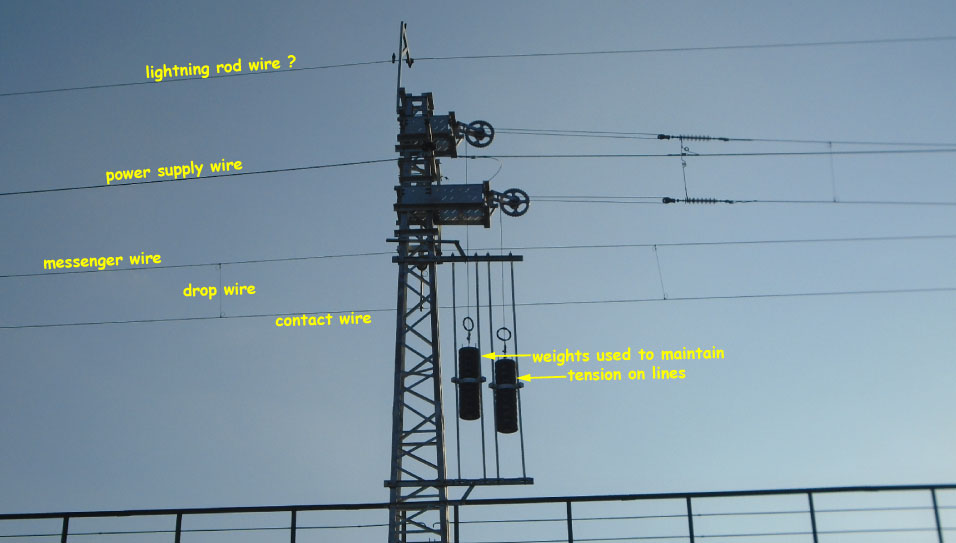
To achieve good electric current collection it is necessary to keep the contact wire positioned within certain limits by supporting the contact wire from a second higher wire known as the messenger wire. This messenger wire supports the contact wire at regular intervals with short vertical wires known as "droppers" or "drop wires". Messenger wires are in turn supported regularly at tower structures and the whole system is then subjected to mechanical tension to reduce wire sagging caused by gravity and ambient temperature fluctuations.
Image below of diesel railway train used during construction of Lao-China Railway near Vang Vieng Dec. 2020
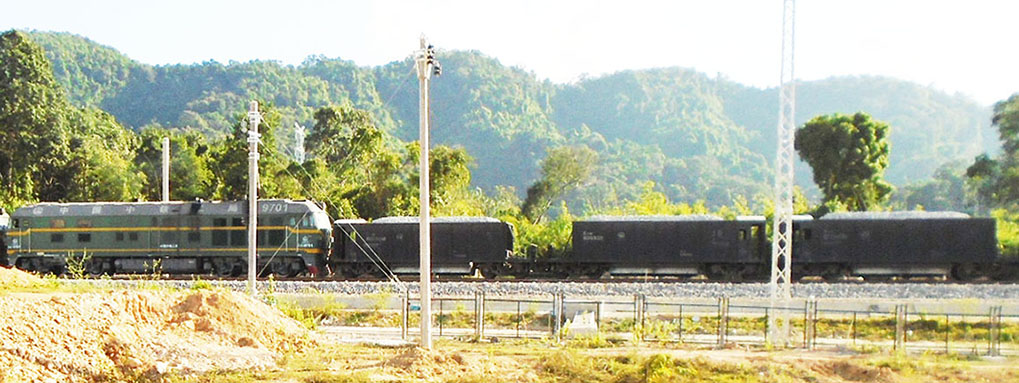
Image below of diesel railway unit (for track laying?) used during construction of Lao-China Railway near Vang Vieng Jan. 2021:
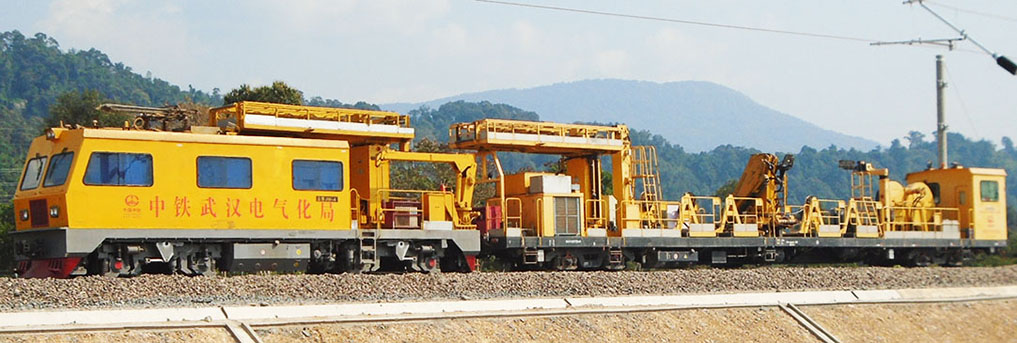
Lao-China Railway pylon towers image below:
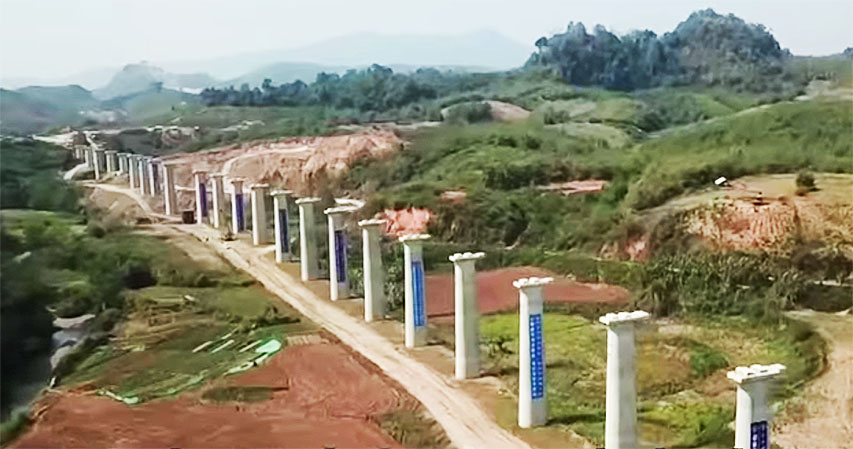
Typical railway pylon tower base footprint near Vang Vieng measures about 2 meters by 4 meters below:
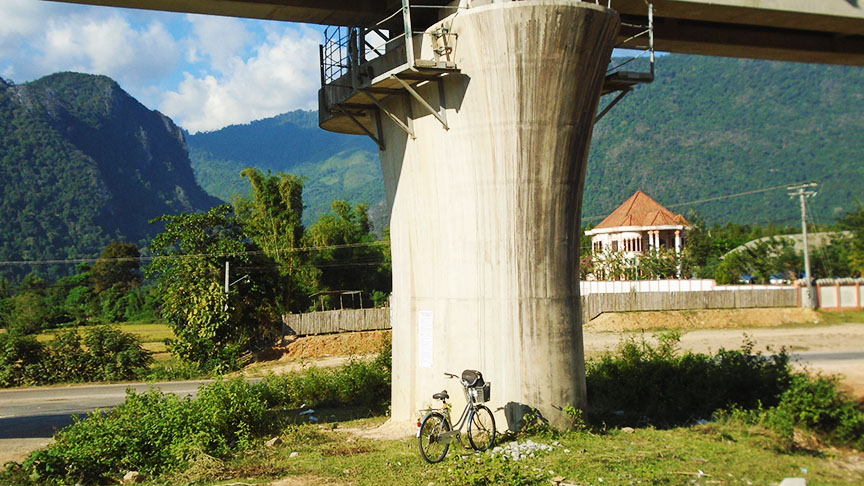
Railway Pylon Beam Installing image below:
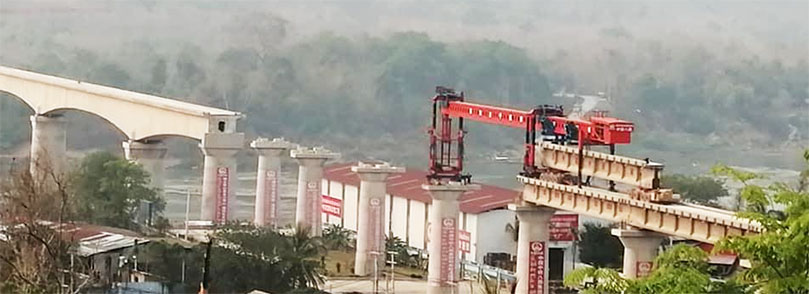
Lao-China Railway beams hauling and installing images below:
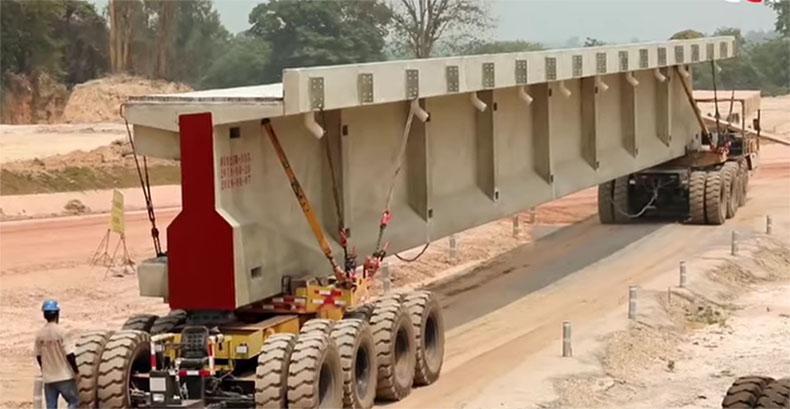
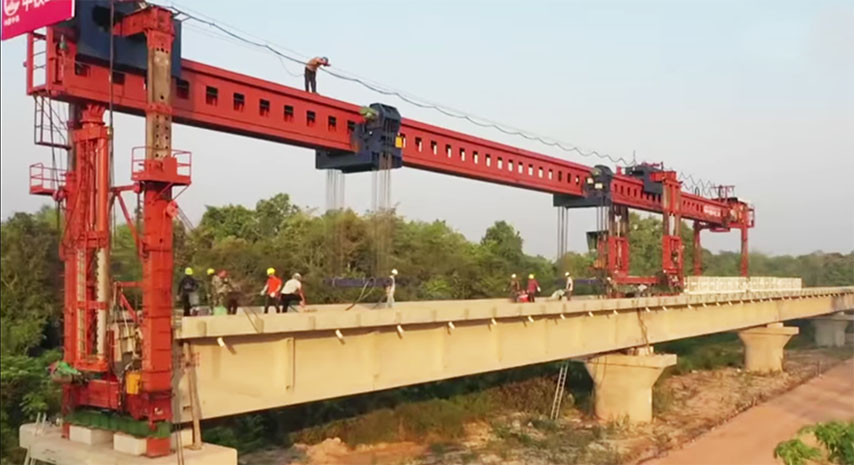
Railway tracks below
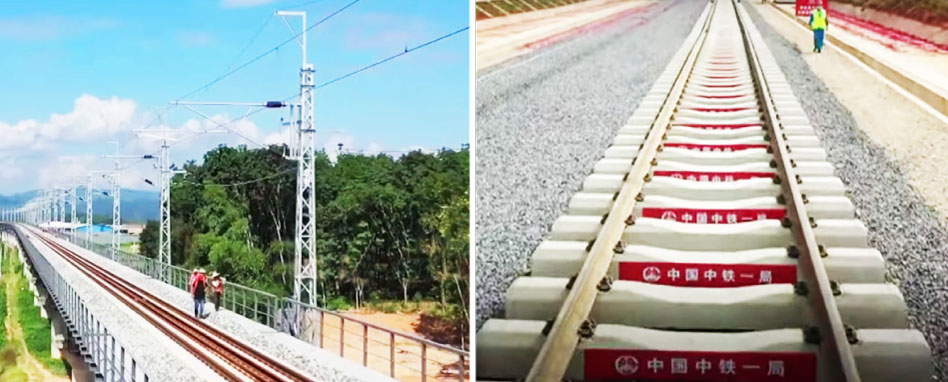
Railway Station tracks and platforms image below
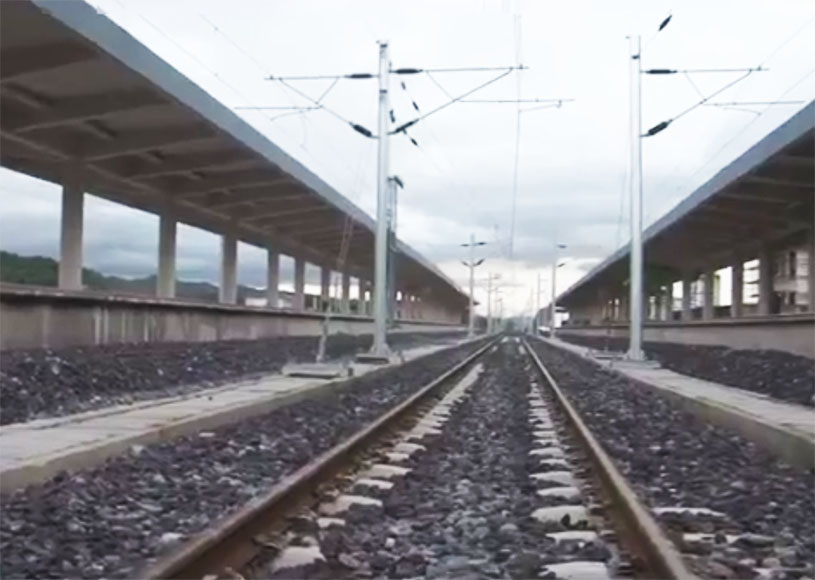
The Lao-China Railway has 76 tunnels with a combined length of 198 kilometers within Lao PDR. All seem to have been excavated using small power tools and hand labor rather than tunnel-boring machines (TBM).
Image of Lao-China Railway tunnel excavation on the China side below:
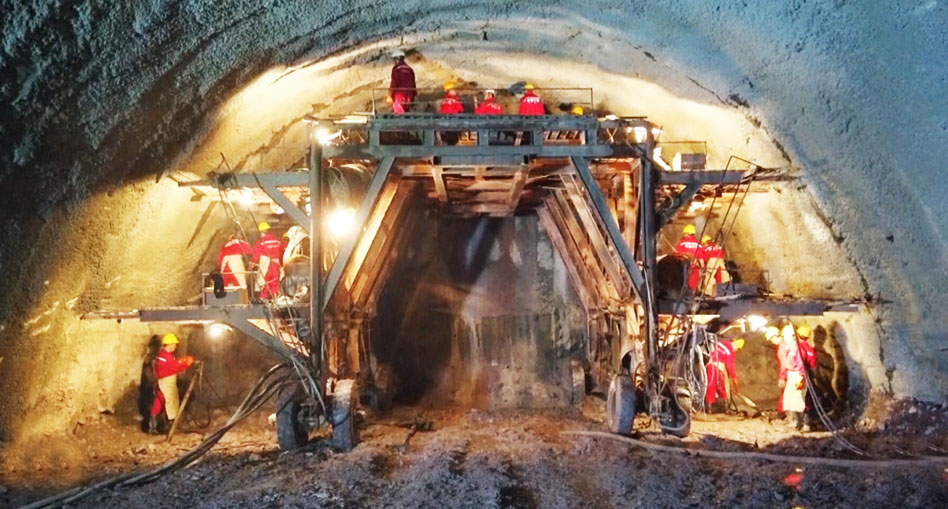
Image of Lao-China Railway tunnel work on the Laos side below:
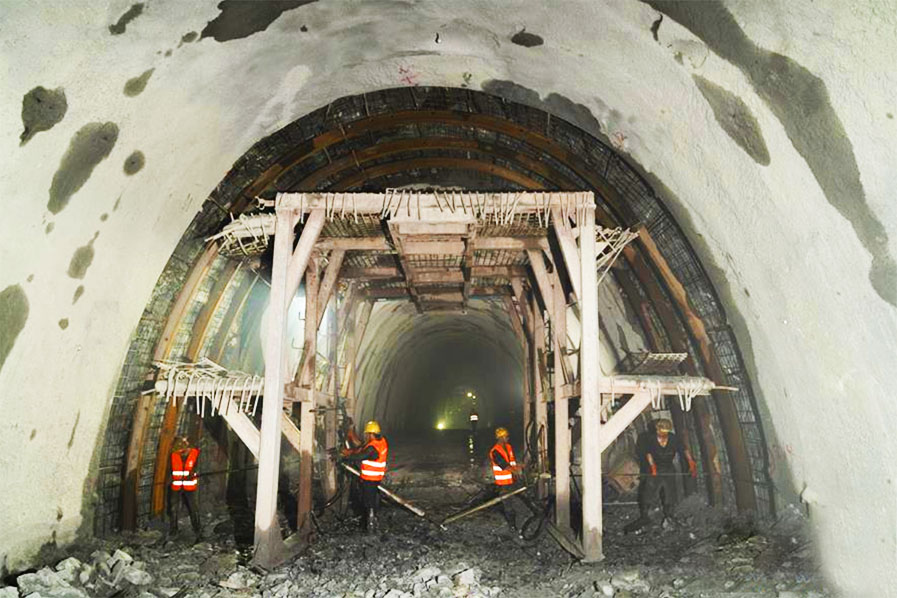
Finished railway tunnel image below:
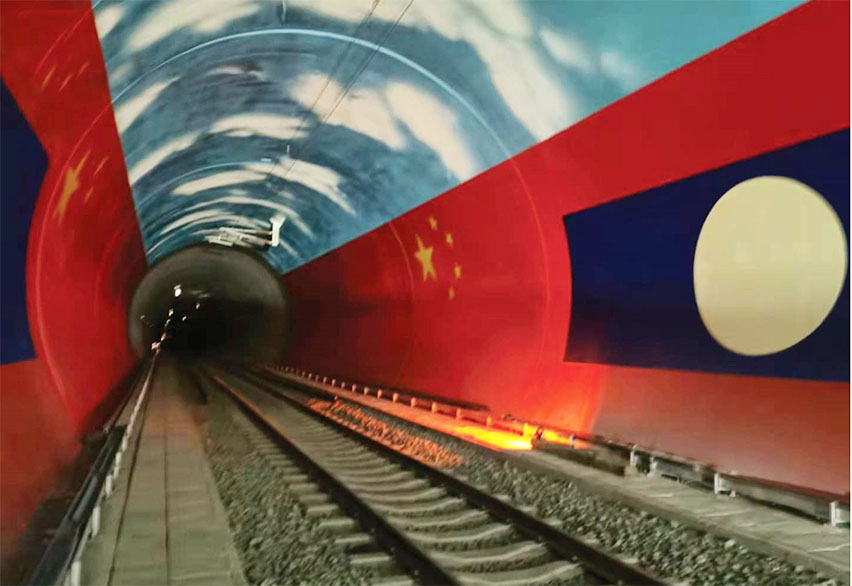
The Lao-China Railway project had most of its steel rails manufactured in 100 meter lengths. Normally, five of these rails are welded together at a special facility near the railway construction site into 500-meter-length rails that are then transported by rail cars to the final location and drag-dropped along the sides of the railway bed. After the concrete “sleeper” ties are placed and positioned on the ballast bed these 500-meter rails are then lifted and moved into position on top of the ties by a rail-laying machine (see images below). Additional final welding at the job site welds these 500-meter rails together into a seamless continuous rail without joints, known as a continuous welded rail (CWR).
A continuous welded rail system lengthens the life of the rails, improves stability and speed of trains, reduces maintenance and enhances passenger comfort by reducing noise and vibration. Historic and traditional railways use a system called “jointed track” where individual rails of about 20 to 40 meter length each are bolted together using steel connecting plates on both sides of the rails. Small gaps are left as expansion joints between the rail ends to allow for expansion of the rails in hot weather. These gaps cause the wheels to make a "clickety-clack" sound when trains pass over them. Jointed track does not have the ride quality of a welded continuous rail and is less desirable for high speed trains.
Lao-China Railway track laying images below:

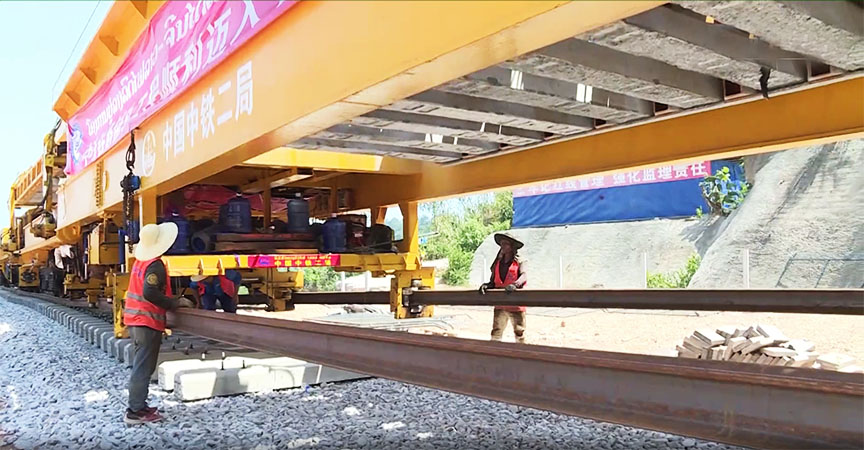
Lao-China Railway track laying images below at 661 meter-long Ban Nong Khay tunnel entrance:

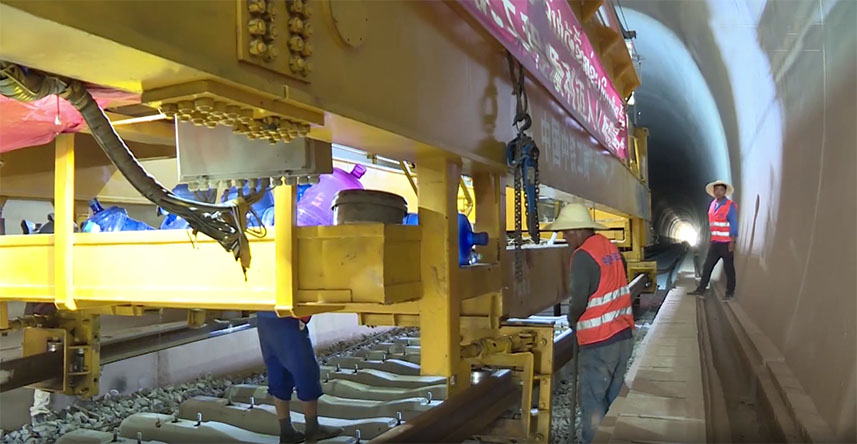
Image below of tie laying process:
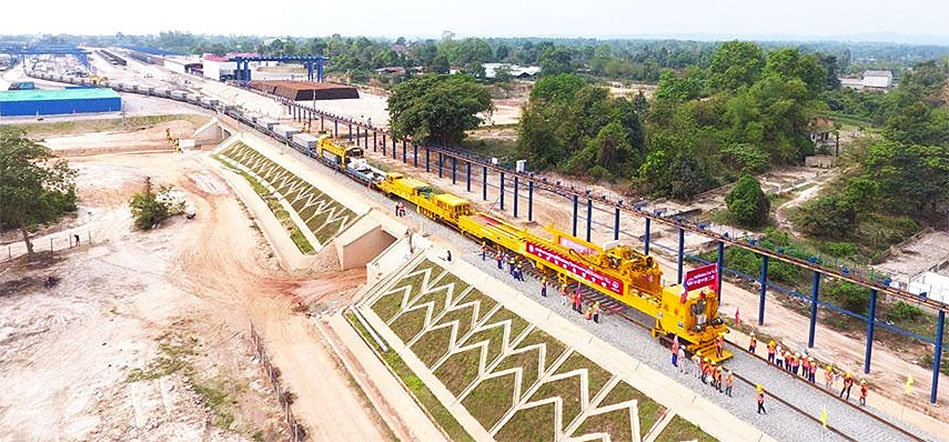
Final welding and grinding of 500-meter-length rails into a continuous rail is done at the job site as shown in image below:
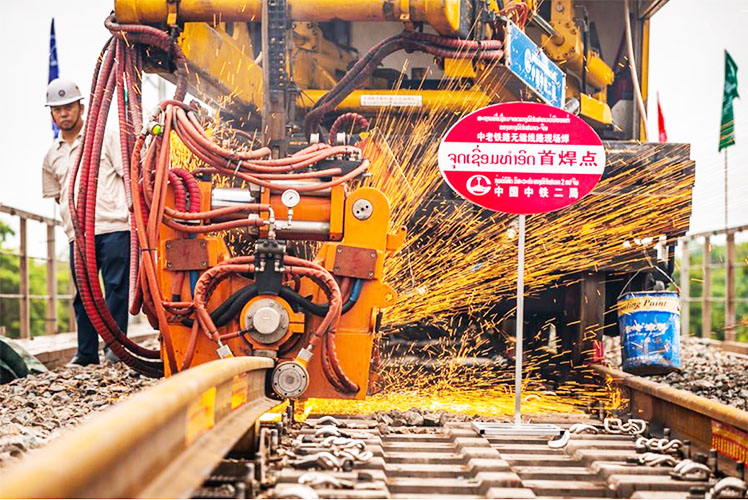
Alignment and fastening image of welded rails shown below:
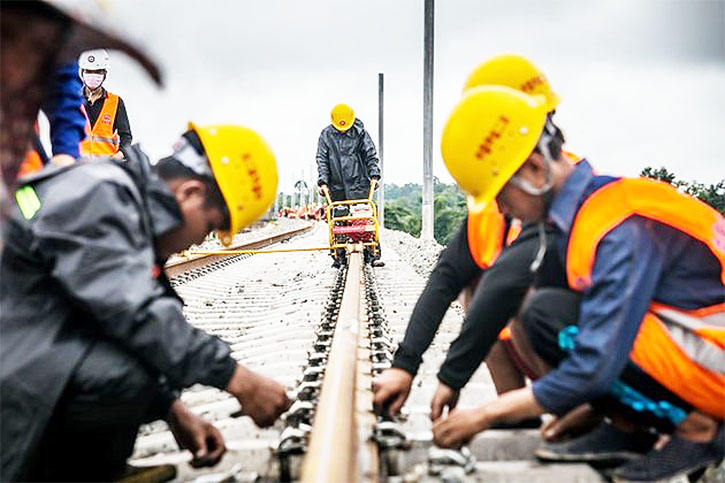
Typical rail line support system image below.
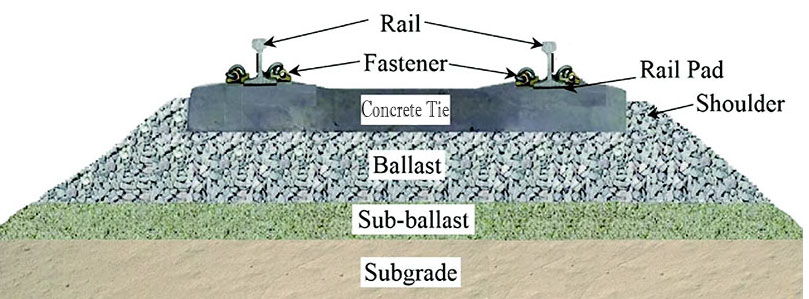
Theft and Death
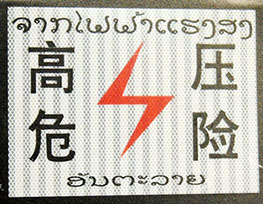
October 27, 2021 - A Lao man died after being electrocuted while cutting cables at a Naxaythong section of the Lao-China Railway in Vientiane Capital. The man had been attempting to steal electrical cables for sale as scrap. He suffered severe electrical burns to his feet and legs and is presumed to have died instantly.
November 7, 2021 - A Lao man was severely injured and hospitalized in Vientiane Capital after being electrocuted while trying to cut and steal electric cables at a Lao-China Railway facility. He will be arrested and prosecuted after release from the hospital.
October 23, 2021 - Electric cables used to power the Lao-China railway in Xay district, Oudomxay province were found cut in eight places over a distance of 350 meters. This was the fifth time such an incident occurred at this location. These acts affect the safety of everyone using the railway and Lao people are urged to consider themselves co-owners of the railway and work together to ensure its safety. Members of the public are urged to notify authorities immediately if anyone is seen trespassing onto restricted railway areas, cutting cables, stealing parts or otherwise damaging railway property.
A hazardous high-voltage zone extends 20 meters around electric transmission cables that are now activated at all times and people are advised to stay away. People and livestock are prohibited from entering or crossing any part of railway property other than at authorized places and crossings.
Similar problems occurred when the Lao-China Expressway toll road opened early in 2021 when cables in the tunnel were cut and removed causing darkness and dangerous driving conditions. Several deaths have also occured from excess speed while other accidents have been caused by vehicle impacts with livestock wandering onto the roadway.
There are two places near Luang Prabang where the railway line crosses the Mekong. Image below of the 1,220 meter-long railway bridge over the Mekong near Luang Prabang town:
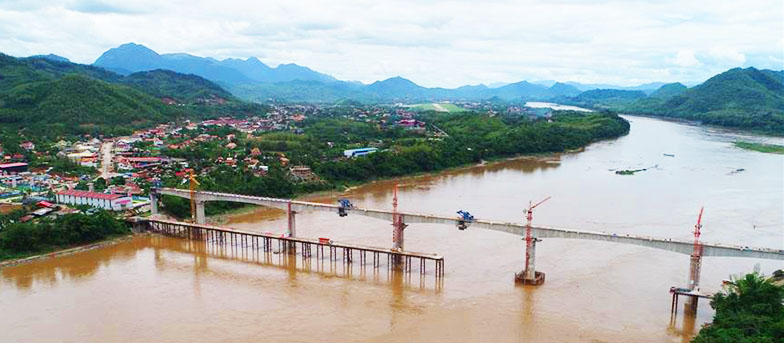
Image below of the 1,436 meter-long railway bridge over the Mekong in a rural area about 20 km north of Luang Prabang town (Near Ban Hat Lin as seen on our LP Area Map) as it comes south from Oudom Xay through very remote terrain :
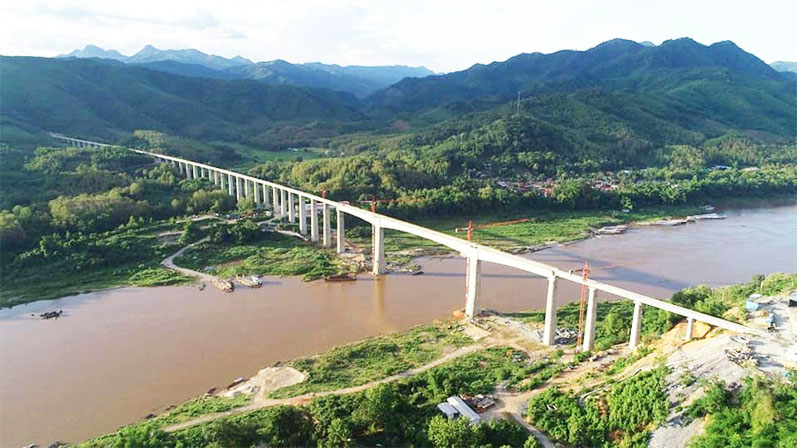
Hin Heup bridges and railway line over Nam Lik river image below.

We wonder how much of the stony materials removed when excavating railway tunnels may have been recycled and used as ballast material for the Lao-China Railway. In 2020 we saw a noisy and dusty stone-crushing facility in operation near the Vang Vieng tunnel entrance. These tunnels often go through limestone karst mountains which would seem ideal material for processing and use as ballast.
Image below of stone-crushing facility in operation near the Vang Vieng tunnel entrance seen in the background.
